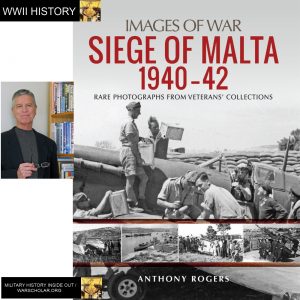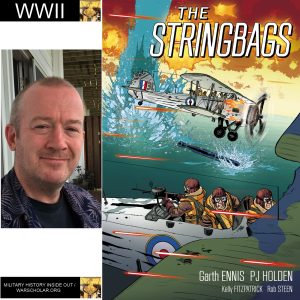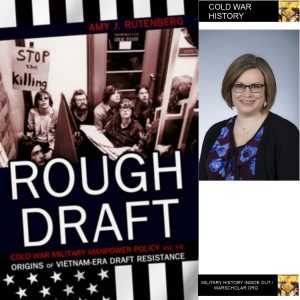 Check out the book here
Check out the book here
https://www.pen-and-sword.co.uk/Siege-of-Malta-194042-Paperback/p/17103
Some spots of the world have the luxury of being at the edges of the world in a strategic sense. They are out of the way and generally quiet as war rages on in distant parts. Others have the distinction of being where the action is. These areas lie on trade routes or lines of communication and this was the case for the Mediterranean island of Malta.
The Axis and Allies fought bitterly over the island – the British on one side, and the Germans and Italians on the other. Author Anthony Rogers is linked to Malta and its history through family and upbringing and this connection spurred the writing of his upcoming book Siege of Malta 1940-42. He wanted to share with readers a part of the photographic history of this conflict.
The book is filled with wartime imagery of the conflict over the island. Weapons, soldiers, terrain, wreckage and the like are found throughout the book. The photographs are from a wide variety of sources and Anthony Rogers has added explanations of the photos [in] to give the reader a full idea of what Malta went through. I interviewed Mr. Rogers about the book and what it took to create it.
How did you become interested in studying and writing on the subject of your book?
My mother was Maltese and I grew up and spent many of my early years on Malta. I have always been interested in history, that of Malta and the war years especially. During the period 1940 through 1942, the Italian Regia Aeronautica, joined in 1941 by the German Luftwaffe, conducted an ongoing air campaign, effectively besieging the Maltese Islands. As a child, I recall adults talking among themselves about wartime events. I considered bomb sites, air raid shelters, bunkers as my playgrounds. In a way, it was impossible to escape the recent past and I found it all fascinating. One day, while exploring the area around the megalithic ruins at Mnajdra and Ħaġar Qim, I came across small scattered fragments of aluminium. I realised they were pieces of a crashed aircraft – a German Ju 88, as I would later discover. Later still, I began to research the circumstances of this and other aircraft that had crashed on and around the islands and even met the man responsible for shooting down that particular Ju 88. My interest prompted me to write Battle over Malta which, in turn, led to Air Battle of Malta. Both books focus on wartime aviation losses in and around the Maltese Islands. In the course of my research I acquired the first of many wartime photographs. Over the years these have grown into a nice collection. Rather than leave them stored away and out of sight, I thought why not incorporate a selection in an image-led book? Siege of Malta 1940–42 is the result.
What aspect of this subject does your book focus on?
The book covers Malta’s wartime events from June 1940 to 1943, as seen by those who were there, though their photographs.
Who was taking the photographs you found? Were they civilians or government or military sponsored photographers?
Some images were taken by official military photographers, some by civilian press photographers and a good number by ordinary servicemen who were lucky enough to own a camera. At the time, a camera was something of a luxury item for most. Also, it was necessary during the war to have a photography permit. Interestingly, the Wehrmacht appears not to have been restricted in the way the Allies were and many German soldiers, sailors and airmen owned a camera. Some of the photographs in the book were taken by Axis air force personnel.
What are the major themes of this book?
I have divided the book into chapters as follows: Island Fortress, The Air War: 1940, The Air War: 1941, The Air War: 1942, Artillery and the PBI, Malta Convoys, The Most Bombed Place on Earth. In addition, there is a colour section with images of Malta in more recent times – former wartime locations, that sort of thing.
Can you elaborate on the section “The Most Bombed Place on Earth”?
The Second World War was not yet at an end when the Australian war correspondent Alan Moorehead wrote: ‘Malta became the most bombed place on earth.’ This was true at the time, when an all-out effort was underway to neutralise Malta as an effective military base. But as the war continued, Germany and Japan would be subjected to much heavier bombing.
What was the purpose of the air campaign against Malta? Did the people of Malta appreciate the importance of Malta in the war or did they simply want to be left alone?
Malta had been part of the British Empire since the early 19th century. When Italy declared war on Britain and France, the island served as a fortified base for the Royal Navy, Royal Air Force and the British Army. Malta, situated in the middle of the Mediterranean, posed a very serious threat to Axis interests, being well within range of shipping routes between Italy and North Africa and thus jeopardising Italo-German efforts in Libya. Ideally, Malta had to be occupied, but first, the island defences had to be put out of action. Yes, the Maltese appreciated the importance of their islands, absolutely. Many Maltese served in His Majesty’s forces. Without the support and active participation of the local populace, the British on Malta could not have held out. The heroism of those who endured the siege was formally recognised with the award of the George Cross in April 1942.
What resource materials did you use for your research?
I have several hundred original photographs relating to wartime Malta and I don’t know how many scans of additional original images. I am something of a perfectionist and so I try to provide detailed and accurate captions. Knowing Malta as I do, it wasn’t difficult to identify locations and, often, events. If need be, I could also refer to my own notes and archive material. I am fortunate in living within walking distance of The National Archives, so I can easily access useful documents relating to Malta’s wartime role.
Do you know what sorts of cameras were used to take these pictures? Did you come across or hear about any filming done of the air war by either side?
Most still cameras would have been 35mm. Yes, the military made a number of newsworthy films – short films. Archive footage exists at the Imperial War Museum, for example. Some of it is staged; a lot is obviously genuine footage of air raids and other events. Luftwaffe camera gun footage also exists, showing attacks by Messerschmitt Bf 109s on RAF fighters.
What part of the research process was most enjoyable for you?
Sometimes I came across hitherto unknown images. That’s always good. I also enjoy providing reliable captions, especially when an image has been previously published with misleading or inaccurate information.
Was there anything you discovered that moved you?
I don’t think so. However, when a former anti-aircraft gunner had among his photos one showing a cousin and two of my uncles, that was a surprise. He knew them, as he had been located nearby when he was based in southern Malta. The image features in the book.
What was the most difficult issue to research?
It was a challenge finding photographs from the Italian and German side. I tend to avoid using generic images. Finding relevant images and providing accurate captions are essential.
What do you hope the book will do for readers?
I hope it helps preserve the memory of past events. And I enjoy sharing such images in this way, so I hope they are appreciated.
Did you have any difficulties in finishing the book and publishing it and if so, how did you overcome those?
There were no major issues or problems. Michael Leventhal asked me to put together the book for Greenhill Books and I was lucky to work with some very professional people: Peter Wilkinson prepared the maps; Noel Sadler did the layout and design; it all went smoothly.
What is your next research or writing project?
Another image-led book, but this time focusing on an altogether different topic: mercenaries and the emergence and development of private military companies.
Do you have any online accounts where people can find more of your work?
People can search for my work online simply by Googling my name together with key words, such as Malta and/or World War 2.
Author Biography
Anthony Rogers
Project/work being discussed: Siege of Malta (Pen and Sword Books/Greenhill Books, 2020)
Check out the book here
https://www.pen-and-sword.co.uk/Siege-of-Malta-194042-Paperback/p/17103
As an Amazon Associate I earn from qualifying purchases.
 Check out this book here https://amzn.to/2XdDsj2
Check out this book here https://amzn.to/2XdDsj2

